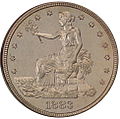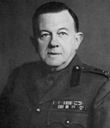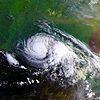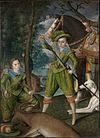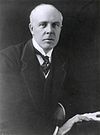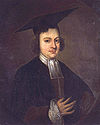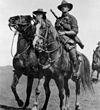Wikipedia:Today's featured article/July 2011
| << | Today's featured articles for July 2011 | >> | ||||
|---|---|---|---|---|---|---|
| Su | Mo | Tu | We | Th | Fr | Sa |
| 1 | 2 | |||||
| 3 | 4 | 5 | 6 | 7 | 8 | 9 |
| 10 | 11 | 12 | 13 | 14 | 15 | 16 |
| 17 | 18 | 19 | 20 | 21 | 22 | 23 |
| 24 | 25 | 26 | 27 | 28 | 29 | 30 |
| 31 | ||||||
July 1
John Edward Brownlee served as Attorney-General of the province of Alberta in western Canada from 1921 until 1926, in the United Farmers of Alberta (UFA) government of Herbert Greenfield. As Brownlee was the only lawyer in a caucus formed almost entirely of farmers, his role extended beyond the traditional expectations of an attorney-general; he became the government's de facto leader in the Legislative Assembly of Alberta. Brownlee quickly became identified with the government's conservative faction. He opposed radical changes to the structure of government and urged thrift in public spending. As part of the government's attempts to balance its budget, Brownlee favoured selling its money-losing railways and concluding an agreement with the federal government to give Alberta control over its natural resources; he was unsuccessful at both while Attorney-General. UFA Members of the Legislative Assembly (MLAs) began to see Brownlee as a better leader than the indecisive Greenfield. A group of them attempted to force Greenfield to resign in Brownlee's favour. Though Brownlee opposed these attempts, he was eventually persuaded to accept the premiership if Greenfield willingly relinquished it. Brownlee became premier on November 23, 1925. (more...)
Recently featured: Alexander of Lincoln – Theoren Fleury – Ariel
July 2
The Sun Also Rises is a 1926 novel written by American author Ernest Hemingway about a group of American and British expatriates who travel from Paris to the Festival of Fermín in Pamplona to watch the running of the bulls and the bullfights. An early and enduring modernist novel, it received mixed reviews upon publication. The novel was published in the US in 1926 and in 1927 in England with the title of Fiesta. The basis for the novel was Hemingway's 1925 trip to Spain. The setting was unique and memorable, showing the seedy café life in Paris and the excitement of the Pamplona festival, with a middle section devoted to descriptions of a fishing trip in the Pyrenees. Also unique was Hemingway's spare writing style, combined with his restrained use of description to convey characterizations and action, which became known as the iceberg theory. The characters are based on real people (who are pictured) and the action is based on real events. (more...)
Recently featured: John Brownlee as Attorney-General of Alberta – Alexander of Lincoln – Theoren Fleury
July 3
Transformers is a 2007 American science fiction action film based on the Transformers toy line. The film, which combines computer animation with live action, is directed by Michael Bay and produced by Steven Spielberg. It stars Shia LaBeouf as Sam Witwicky, a teenager involved in a war between the heroic Autobots and the evil Decepticons, two factions of alien robots that can disguise themselves by transforming into everyday machinery. The Decepticons desire control of the AllSpark, the object that created their robotic race, with the intention of using it to build an army by giving life to the machines of Earth. Megan Fox, Josh Duhamel, Tyrese Gibson, Jon Voight, Anthony Anderson and John Turturro also star, while actors Peter Cullen and Hugo Weaving voice Optimus Prime and Megatron respectively. Transformers was a box-office success, despite mixed critical reaction. Two sequels have been released: Transformers: Revenge of the Fallen in 2009 and Transformers: Dark of the Moon in 2011. (more...)
Recently featured: The Sun Also Rises – John Brownlee as Attorney-General of Alberta – Alexander of Lincoln
July 4
U.S. Route 491 is a north–south U.S. Highway serving the Four Corners region of the United States. One of the newest designations in the U.S. Highway System, it was created in 2003 as a renumbering of U.S. Route 666. With the 666 designation, this road was nicknamed Devil's Highway because of the common Christian belief that 666 is the Number of the Beast. This satanic connotation, combined with a high fatality rate along the New Mexico portion, convinced some people the highway was cursed. The problem was compounded with persistent sign theft. These factors led to two efforts to renumber the highway, by officials in Arizona and then in New Mexico. Since the renumbering, as a result of safety improvement projects, fatality rates have decreased. The highway runs through Colorado, New Mexico, and Utah, as well as the tribal nations of the Navajo Nation and Ute Mountain Ute Tribe. Features along the route include an extinct volcanic core named Shiprock, Mesa Verde National Park, and the self-proclaimed pinto-bean capital of the world, Dove Creek, Colorado. (more...)
Recently featured: Transformers – The Sun Also Rises – John Brownlee as Attorney-General of Alberta
July 5
The Battle of Osan was the first engagement between United States and North Korean forces during the Korean War, on July 5, 1950. A U.S. task force of 400 infantry supported by an artillery battery was moved to Osan, south of the South Korean capital Seoul, and ordered to fight as a rearguard to delay advancing North Korean forces while additional U.S. forces arrived in the country to form a defensive line. The task force lacked both anti-tank guns and effective infantry anti-tank weapons. Aside from a limited number of HEAT shells for the unit's 105-mm howitzers, crew-served weapons capable of defeating the T-34 had not been distributed to U.S. Army forces in Korea at the time. In the first encounter, a North Korean tank column overran the task force and continued its advance south. After the column had successfully breached American lines, the task force opened fire on a force of some 5,000 North Korean infantry approaching its position, temporarily holding up the North Korean advance. Eventually, North Korean troops overwhelmed American positions, and the remnants of the task force retreated in disorder. (more...)
Recently featured: U.S. Route 491 – Transformers – The Sun Also Rises
July 6
Primates are a mammalian order which includes humans. Most non-human primates live in tropical or subtropical regions of the Americas, Africa, and Asia. Primates range in size from the Madame Berthe's mouse lemur, which weighs only 30 grams (1 oz), to the mountain gorilla, weighing 200 kilograms (440 lb). According to fossil evidence, the primitive ancestors of primates may have existed in the late Cretaceous period around 65 million years ago, and the oldest known primate is the Late Paleocene Plesiadapis, c. 55–58 million years ago. Primates are characterized by their large brains, and increased reliance on stereoscopic vision at the expense of smell. These features are most marked in monkeys and apes, and noticeably less so in lorises and lemurs. Three-color vision has developed in some primates. Most also have opposable thumbs and some have prehensile tails. (more...)
Recently featured: Battle of Osan – U.S. Route 491 – Transformers
July 7
The River Parrett flows through the counties of Dorset and Somerset in South West England, from its source in the Thorney Mills springs in the hills around Chedington in Dorset. Flowing northwest through Somerset and the Somerset Levels to its mouth at Burnham-on-Sea, into the Bridgwater Bay Nature Reserve on the Bristol Channel, the Parrett drains about 50 per cent of Somerset's land area. The 37-mile (60 km) long river is tidal for 27 miles (43 km) up to Oath. Because the fall of the river between Langport and Bridgwater is only 1 foot per mile (0.2 m/km), it is prone to frequent flooding in winter and during high tides. During the Roman era the river was crossed by a ford, and in Anglo-Saxon times formed a boundary between Wessex and Dumnonia. From the medieval period the river served the Port of Bridgwater, enabling cargoes to be transported inland. The arrival of the railways led to a decline and commercial shipping now only docks at Dunball. The Parrett along with its connected waterways and network of drains supports an ecosystem that includes several rare species of flora and fauna. The River Parrett Trail has been established along the banks of the river. (more...)
Recently featured: Primate – Battle of Osan – U.S. Route 491
July 8
"Doomsday" is the thirteenth and final episode in the second series of the revival of the British science fiction television series Doctor Who. It was first broadcast on 8 July 2006 and is the conclusion of a two-part story; the first part, "Army of Ghosts", was broadcast on 1 July 2006. The two-part story features the Daleks, presumed extinct after the events of the 2005 series' finale; and the Cybermen, who appeared in "Rise of the Cybermen" and "The Age of Steel". Both species unexpectedly arrived on Earth at the conclusion of "Army of Ghosts". The plot consists mostly of the Daleks and Cybermen waging a global war, with humanity caught in the crossfire. The Doctor and his companions fight for their lives trying to revert the situation. The episode was filmed in December 2005 and January 2006. One of the most popular Doctor Who episodes since the show's revival, "Doomsday" is favoured by critics both for the Cyberman–Dalek conflict and for the farewell scene between the Doctor and his companion, Rose Tyler. (more...)
Recently featured: River Parrett – Primate – Battle of Osan
July 9
Shelton Benjamin is an American professional wrestler and former amateur wrestler best known for his tenure in World Wrestling Entertainment. Benjamin has an amateur wrestling background, including wrestling in high school and at the University of Minnesota. In addition, Benjamin has acted as an assistant coach in amateur wrestling. He first spent time in Ohio Valley Wrestling, where he held the Southern Tag Team Championship four times. WWE then moved him to the main roster and put him into an alliance with Kurt Angle and Charlie Haas, known as Team Angle (and later the World's Greatest Tag Team). During his tenure with the company, he has won the Intercontinental Championship three times, the United States Championship once, and the WWE Tag Team Championship twice with Haas. He currently wrestles for Ring of Honor, where he is currently one half of the World Tag Team Champions with Charlie Haas. (more...)
Recently featured: "Doomsday" – River Parrett – Primate
July 10
Lactarius volemus is a species of fungus in the genus Lactarius. It is distributed in warm temperate regions and northern areas of the Northern Hemisphere, and has been collected in Europe, North America, Central America, and Asia. A mycorrhizal fungus, its fruit bodies grow either individually or in groups at the base of various species of trees from summer to autumn. It is valued as an edible mushroom, and is sold in markets in Asia. The colour varies from apricot to tawny, and the cap may be up to 11 cm (4.3 in) wide. The pale golden yellow gills on the underside of the cap are closely spaced and sometimes forked. One of the mushroom's most distinctive features is the large amount of latex ("milk") it exudes when the gills are damaged. It has a distinctive fishy smell, which does not affect the taste. The mushroom contains a natural rubber that has been chemically characterized. (more...)
Recently featured: Shelton Benjamin – "Doomsday" – River Parrett
July 11
The Parthian Empire was a major Iranian political and cultural power in the Ancient Near East. It was founded in the mid-3rd century BC by Arsaces I. Mithradates I greatly expanded the empire by seizing Media and Mesopotamia from the Seleucids. At its height, the Parthian Empire stretched from the northern reaches of the Euphrates, in what is now Kurdistan, to eastern Iran. The empire, located on the Silk Road trade route between the Roman Empire in the Mediterranean Basin and the Han Dynasty in China, quickly became a center of trade and commerce. The Parthians largely adopted the art, architecture, religious beliefs, and royal insignia of their culturally heterogeneous empire, which encompassed Persian, Hellenistic, and regional cultures. As the Empire expanded westward, they came into conflict with the late Roman Republic. The Parthians captured most of the Levant, but their holdings in Mesopotamia were invaded in turn several times during the Roman–Parthian Wars. Frequent civil war between Parthian contenders to the throne proved more dangerous than foreign invasion, and Parthian power evaporated when Ardashir I, ruler of Estakhr in Fars, revolted against the Arsacids and killed their last ruler, Artabanus IV, in 224 AD. (more...)
Recently featured: Lactarius volemus – Shelton Benjamin – "Doomsday"
July 12
Walter Bache (1842–88) was an English pianist and conductor noted for championing the music of Franz Liszt and other composers of the New German School. He studied privately with Liszt in Italy from 1863 to 1865, and continued to attend Liszt's master classes in Weimar, Germany, regularly until 1885. This led to a particularly close bond between the two men. Bache's major accomplishment was the establishment of Liszt's music in England at the height of the War of the Romantics, when conservative and liberal musical factions openly argued about the future of classical music and the merits of the compositions written in their respective schools. Bache programmed several of Liszt's orchestral and choral works through an annual series of concerts, which he single-handedly funded, organized and promoted. He performed two-piano arrangements of Liszt's orchestral works before the debuts of the original versions, and programmed some of his symphonic poems shortly after they had been premiered at the Crystal Palace. The English musical press, while generally hostile to the music he presented, noted and appreciated Bache's efforts. Liszt remained grateful; without Bache, he acknowledged, his music might not have gained the foothold it did. (more...)
Recently featured: Parthian Empire – Lactarius volemus – Shelton Benjamin
July 13
Somerset is a county in South West England. The county town is Taunton, which is in the south of the county. The ceremonial county of Somerset borders Bristol and Gloucestershire to the north, Wiltshire to the east, Dorset to the south-east, and Devon to the south-west. It is partly bounded to the north and west by the Bristol Channel and the River Severn. Somerset is a rural county of rolling hills, such as the Mendips, Quantocks and Exmoor, and large, flat expanses of land including the Somerset Levels. There is evidence of human occupation from Paleolithic times, and subsequent settlement in the Roman and Saxon periods. Farming of sheep and cattle, including production of wool and the county's famous cheeses (most notably Cheddar), is traditional, as is the more unusual cultivation of willow for basketry. Apple orchards were once plentiful; to this day, Somerset is known for the production of strong cider. (more...)
Recently featured: Walter Bache – Parthian Empire – Lactarius volemus
July 14
The trade dollar was a United States dollar coin minted to compete with other large silver coins that were already popular in East Asia. The idea first came about in the 1860s, when the price of silver began to decline due to increased mining efforts in the western United States. The Coinage Act of 1873 made trade dollars legal tender up to five dollars. The coins were first struck in 1873, and most of the production was sent to China. Eventually, bullion producers began converting large amounts of silver into trade dollars, causing the coins to make their way into American commercial channels. This caused frustration among those who were given them in payment, as the coins were largely maligned and traded for less than one dollar each. In response to their wide distribution in American commerce, the coins were officially demonetized in 1876, but continued to circulate. Production of business strikes ended in 1878, though the mintage of proof coins continued until 1883. The trade dollar was remonetized when the Coinage Act of 1965 was signed into law. (more...)
Recently featured: Somerset – Walter Bache – Parthian Empire
July 15
Neil Hamilton Fairley (1891–1966) was an Australian physician and soldier who was instrumental in saving the lives of thousands of allied soldiers from malaria and other diseases. A graduate of the University of Melbourne, Fairley joined the Australian Army Medical Corps in 1915. In the inter-war period he became renowned as an expert on tropical medicine. Fairley returned to the Australian Army during the Second World War as director of medicine. He played an important role in the planning for the Battle of Greece, convincing the British Commander-in-Chief, General Sir Archibald Wavell, to alter his campaign plan to reduce the danger from malaria. In the South West Pacific Area, Fairley became responsible for coordinating the activities of all allied forces in the fight against malaria and other tropical diseases. After the war Fairley returned to London where he became a consulting physician to the Hospital for Tropical Diseases and Wellcome Professor of Tropical Medicine at the London School of Hygiene and Tropical Medicine. A serious illness in 1948 forced him to resign his professorship, but he retained his practice and membership of numerous committees, becoming an "elder statesman" of tropical medicine. (more...)
Recently featured: Trade dollar – Somerset – Walter Bache
July 16
Mantra-Rock Dance was a musical countercultural event held on January 29, 1967, at the Avalon Ballroom in San Francisco. It was organized by followers of the International Society for Krishna Consciousness as an opportunity for its founder, A. C. Bhaktivedanta Swami Prabhupada, to address a wider public, and as a promotional and fundraising effort for their first center on the West Coast of the United States. The Mantra-Rock Dance featured American rock groups the Grateful Dead, Big Brother and the Holding Company (for whom Janis Joplin was the lead singer) and Moby Grape; these bands agreed to appear with Prabhupada and to perform for free. The participation of countercultural leaders considerably boosted the event's popularity; among them were the poet Allen Ginsberg, who led the singing of the Hare Krishna mantra on stage along with Prabhupada, and LSD promoters Timothy Leary and Augustus Owsley Stanley III. The Mantra-Rock Dance concert was later called "the ultimate high" and "the major spiritual event of the San Francisco hippy era". It led to favorable media exposures for Prabhupada and his followers, and brought the Hare Krishna movement to the wider attention of the American public. (more...)
Recently featured: Neil Hamilton Fairley – Trade dollar – Somerset
July 17
Hurricane Danny was the only hurricane to make landfall in the United States during the 1997 Atlantic hurricane season. The system formed on September 16 from an area of thunderstorms over the warm waters of the Gulf of Mexico. Guided by two high-pressure areas, the storm tracked toward the northeast, making landfall along the Gulf Coast. Pushing inland, the storm moved across the southeastern United States and ultimately affected parts of New England with rain and wind. Danny is noted for its extreme rainfall, the tornadoes it spawned, and the damage it inflicted; it is blamed for causing nine fatalities and $100 million (1997 USD, $190 million 2024 USD) in losses. The storm dropped a record amount of rainfall over Alabama, including a total of 36.71 inches (932 mm) at Dauphin Island. Flooding, power outages, and beach erosion occurred throughout the Gulf Coast, and flood rescues had to be performed in the immediate aftermath. The storm produced several tornadoes on the East Coast, causing a great amount of damage. (more...)
Recently featured: Mantra-Rock Dance – Neil Hamilton Fairley – Trade dollar
July 18
James Boyd (1906–1998) was an American physicist, mathematician, and academic administrator. He was director of the Georgia Tech Research Institute (GTRI) from 1957 to 1961, president of West Georgia College from 1961 to 1971, and acting president of the Georgia Institute of Technology from 1971 to 1972. Along with two fellow Georgia Tech researchers, Boyd co-founded Scientific Atlanta, where he was a board member for 25 years. As director of the Engineering Experiment Station (now GTRI), Boyd was involved with the establishment of nuclear research at Georgia Tech and the construction of the Neely Nuclear Research Center. As president of West Georgia College, Boyd oversaw the racial integration of the campus in 1963, unprompted by a court order. In 1971, Boyd was assigned as interim president of Georgia Tech following a brief tenure as a vice chancellor for the University System of Georgia. At Georgia Tech, Boyd resolved issues involving the attempted takeover of the Engineering Experiment Station by former president Arthur G. Hansen and alumni calls to fire head football coach Bud Carson. (more...)
Recently featured: Hurricane Danny – Mantra-Rock Dance – Neil Hamilton Fairley
July 19
The 1949 Ambato earthquake was the largest earthquake in the Western Hemisphere in over a decade. On August 5, 1949, it struck Ecuador's Tungurahua Province southeast of its capital, Ambato, and killed 5,050 people. Measuring 6.8 on the Richter scale, it originated from a hypocenter 40 km (25 mi) beneath the surface. The earthquake initially followed an intersection of several northwest–southeast-trending faults in the Inter-Andean Valley, which were created by the subduction of the Carnegie Ridge. Strata of rock cracked as the earthquake ruptured the faults, sending out powerful shockwaves. The nearby villages of Guano, Patate, Pelileo, and Pillaro were destroyed, and the city of Ambato suffered heavy damage. The earthquake flattened entire buildings, and subsequent landslides caused damage throughout the Tungurahua, Chimborazo, and Cotopaxi Provinces. It disrupted water mains and communication lines and opened a fissure into which the small town of Libertad sank. Moderate shaking from the event extended as far away as Quito and Guayaquil. (more...)
Recently featured: James Boyd – Hurricane Danny – Mantra-Rock Dance
July 20
The painted turtle is the only species of Chrysemys, a genus of pond turtles. It lives in slow-moving freshwaters, from southern Canada to the Louisiana Gulf Coast and northern Mexico, and from the Atlantic to the Pacific. Four U.S. states name the painted turtle as their official reptile. Fossils show that the painted turtle existed 15 million years ago, but four regionally based subspecies (the eastern, midland, southern, and western) evolved during the last ice age. The turtle's skin is olive to black with distinctive red, orange, or yellow stripes. Reliant on warmth from its surroundings, the painted turtle can frequently be seen basking on logs. Crayfish and dragonflies are among the turtle's preferred prey. Many predators eat the turtle eggs or hatchlings, but the adult's shell protects it from most enemies except for raccoons, alligators and humans. Turtles in the wild can live for more than 55 years. (more...)
Recently featured: 1949 Ambato earthquake – James Boyd – Hurricane Danny
July 21
Californium is the radioactive metallic chemical element with atomic number 98. It was first produced in 1950 by bombarding curium with alpha particles at the University of California, Berkeley. The element was named for California and the University of California. Two crystalline forms exist for californium under normal pressure, and a third exists at high pressure. Compounds of californium are dominated by a chemical form of the element, designated californium(III), that can participate in three chemical bonds. The most stable of californium's twenty known isotopes is californium-251, which has a half-life of 898 years. Californium-252, whose half-life is 2.645 years, is the most common isotope used. Californium can be used to help start up nuclear reactors, and is employed as a source of neutrons when studying materials with neutron diffraction and neutron spectroscopy. It can also be used in nuclear synthesis of higher mass elements; ununoctium was synthesized by bombarding californium-249 atoms with calcium-48 ions. Use of californium must take into account radiological concerns and the element's ability to disrupt the formation of red blood cells by bio-accumulating in skeletal tissue. (more...)
Recently featured: Painted turtle – 1949 Ambato earthquake – James Boyd
July 22
Canadian heraldry is the cultural tradition and style of coats of arms and other heraldic achievements in modern and historic Canada. Derived mainly from heraldic traditions in France and the United Kingdom, Canadian heraldry also incorporates distinctly Canadian symbols, especially native flora and fauna, references to the First Nations and other aboriginal peoples of Canada, and uniquely Canadian elements such as the Canadian pale, derived from the Canadian flag. In 1988, governance of both personal and corporate heraldry in Canada was patriated from the heraldic authorities in England and Scotland with the formation of the Canadian Heraldic Authority, which now has exclusive jurisdiction over granting awards of arms in Canada. Coats of arms are used throughout Canada by all levels of government, in many cases including royal insignia as a mark of authority. All citizens of Canada have the right to petition for an award of arms, as do other entities including businesses and religious institutions. The granting of arms is regarded as an honour from the monarch, via the Governor General, and thus are bestowed only on those whom the Chief Herald has deemed worthy of receiving a grant of arms. (more...)
Recently featured: Californium – Painted turtle – 1949 Ambato earthquake
July 23
Robert Peake the elder (c. 1551–1619) was an English painter active in the later part of Elizabeth I's reign and for most of the reign of James I. In 1604, he was appointed picture maker to the heir to the throne, Prince Henry, and in 1607, serjeant-painter to King James I, a post he shared with John De Critz. Peake is often called "the elder", to distinguish him from his son, the painter and print seller William Peake (c. 1580–1639) and from his grandson, Sir Robert Peake (c. 1605–1667), who followed his father into the family print-selling business. Peake was the only English-born painter of a group of four artists whose workshops were closely connected. The others were De Critz, Marcus Gheeraerts the Younger, and the miniature-painter Isaac Oliver. Between 1590 and about 1625, they specialised in brilliantly coloured, full-length "costume pieces" (example pictured) that are unique to England at this time. It is not always possible to attribute authorship between Peake, De Critz, Gheeraerts and their assistants with certainty. (more...)
Recently featured: Canadian heraldry – Californium – Painted turtle
July 24
"Nothing to My Name" is the English title of a 1986 Mandarin-language rock song by Cui Jian (pictured). It is widely considered Cui's most famous and most important work, and one of the most influential songs in the history of the People's Republic of China. The song is recognized as the first rock song in China and was an unofficial anthem for Chinese youth and activists during the Tiananmen Square protests of 1989. Both in its lyrics and instruments, the song mixes traditional Chinese styles with modern rock elements. In the lyrics, the singer addresses a girl who is scorning him because he has nothing. The song has also been interpreted as being about the dispossessed youth of the time, because it evokes a sense of disillusionment and lack of individual freedom that was common among the young generation during the 1980s. (more...)
Recently featured: Robert Peake the elder – Canadian heraldry – Californium
July 25
Maximian (c. 250 – 310) was Roman Emperor from 285 to 305. He was Caesar from 285 to 286, then Augustus from 286 to 305. He shared the latter title with his co-emperor and superior, Diocletian, whose political brain complemented Maximian's military brawn. Maximian established his residence at Trier but spent most of his time on campaign. From 285 to 288, he fought against Germanic tribes along the Rhine frontier. After Carausius's rebellion in Northern Gaul was put down in 296, Maximian moved south to combat piracy near Hispania and Berber incursions in Mauretania. When these campaigns concluded, he returned to Rome in 299 to receive a triumph. After several years of leisure, he retired as Augustus at Diocletian's request in 305. However, he took up the title once again the following year, joining his son Maxentius in rebellion. After a failed leadership challenge in 307, Maximian fled to the court of Constantine in Trier. At the Council of Carnuntum in November 308, Diocletian forced Maximian to once again renounce his imperial claim. In early 310, Maximian attempted to seize Constantine's title while the emperor was on campaign on the Rhine. Few supported him, and he was captured by Constantine. He committed suicide later that year on Constantine's orders. (more...)
Recently featured: "Nothing to My Name" – Robert Peake the elder – Canadian heraldry
July 26
Albert Stanley, 1st Baron Ashfield (1874–1948) was managing director, then chairman of the Underground Electric Railways Company of London (UERL) from 1910 to 1933 and chairman of the London Passenger Transport Board (LPTB) from 1933 to 1947. At a young age, he held senior positions in the developing tramway systems of Detroit and New Jersey. In 1907, his management skills led to his recruitment by the UERL, which was struggling through a financial crisis. He quickly integrated the company's management and used advertising and public relations to improve profits. As managing director of the UERL from 1910, he led the take-over of competing underground railway companies and bus and tram operations to form an integrated transport operation known as the Combine. He was Member of Parliament for Ashton-under-Lyne from December 1916 to January 1920 and was President of the Board of Trade between December 1916 and May 1919. He returned to the UERL and then chaired it and its successor the LPTB during the organisation's greatest period of expansion between the two World Wars, making it a world-respected organisation considered an exemplar of the best form of public administration. (more...)
Recently featured: Maximian – "Nothing to My Name" – Robert Peake the elder
July 27
The Point Park Civic Center was a proposed civic center for downtown Pittsburgh, Pennsylvania, where the confluence of the Allegheny and Monongahela Rivers forms the Ohio River. The structure was designed by Frank Lloyd Wright on commission from Edgar J. Kaufmann in the late 1940s. Wright initially envisioned a circular building more than 1,000 feet (300 m) in diameter and 175 feet (50 m) tall. The structure, containing an opera house, sports arena, three movie theaters, and a convention hall, was wrapped with a spiraling strip of road. The plan expressed Wright's insistence on bringing the automobile into the social setting. It did not find favor with Pittsburgh authorities. To make the design more palatable to its audience, Wright developed a radically different proposal for a monolithic tower supporting bridges across the Allegheny and Monongahela. This too was unsuccessful, and none of Wright's work for the site was ever built. The site is now occupied by Point State Park. The unused design has garnered scholarly attention, and elements of it have been compared to other Wright designs, such as the Solomon R. Guggenheim Museum and his unrealized plans for Monona Terrace. (more...)
Recently featured: Albert Stanley, 1st Baron Ashfield – Maximian – "Nothing to My Name"
July 28
Jack L. Warner (1892–1978) was a Canadian-born American film executive who was the president and driving force behind the Warner Bros. Studios in Hollywood, Los Angeles, California. Warner's 45-year career was longer than that of any other traditional Hollywood studio mogul. He worked with his brother, Sam Warner, to procure the technology for the film industry's first talking picture. Although Warner was feared by many of his employees and inspired ridicule with his uneven attempts at humor, he earned respect for his shrewd instincts and toughmindedness. He recruited many of Warner Bros.' top stars and promoted the hard-edged social dramas for which the studio became known. Although he was a staunch Republican, Warner encouraged film projects that promoted the agenda of Democratic President Franklin D. Roosevelt's New Deal. He speedily grasped the threat posed by European fascism and criticized Nazi Germany well before America's involvement in World War II. During the postwar era Warner supported an anti-Communist crusade that culminated in the "blacklisting" of Hollywood directors, actors, screenwriters, and technicians. Despite his controversial public image, Warner remained a force in the motion picture industry until his retirement in the early 1970s. (more...)
Recently featured: Point Park Civic Center – Albert Stanley, 1st Baron Ashfield – Maximian
July 29
The English poet Christopher Smart was confined to mental asylums from 1757 until 1763. Smart was admitted into St Luke's Hospital for Lunatics on 6 May 1757. While in St Luke's he wrote Jubilate Agno and A Song to David, the poems considered to be his greatest works. Although many of his contemporaries agreed that Smart was "mad", accounts of his condition and its ramifications varied, and some felt that he had been committed unfairly. Smart was diagnosed as "incurable" while at St Luke's, and when they ran out of funds for his care he was moved to Mr Potter's asylum. Smart's isolation led him to abandon the poetic genres of the 18th century that had marked his earlier work, and to write religious poetry. His asylum poetry reveals a desire for "unmediated revelation", and it is possible that the self-evaluation found in his poetry represents an expression of evangelical Christianity. Late 18th-century critics felt that Smart's madness justified them in ignoring his A Song to David, but during the following century Robert Browning and his contemporaries considered his condition to be the source of his genius. It was not until the 20th century that critics reconsidered Smart's case and began to see him as a revolutionary poet. (more...)
Recently featured: Jack L. Warner – Point Park Civic Center – Albert Stanley, 1st Baron Ashfield
July 30
The use of horses in World War I reflected a transitional period in the evolution of armed conflict. Cavalry units were initially considered essential, but the vulnerability of the horse to modern machine gun and artillery fire eventually fostered interest in mechanized forces. All of the major combatants in World War I began the conflict with cavalry forces. Germany and Austria-Hungary stopped using them on the Western Front soon after the war began, but they continued to be deployed in a limited fashion on the Eastern Front well into the war. On the Allied side, the United Kingdom used mounted infantry and cavalry charges throughout the war, but the United States used cavalry for only a short time. Horses were mainly used for reconnaissance and for carrying messengers, as well as to pull artillery, ambulances, and supply wagons. The presence of horses often increased morale among the soldiers at the front, but contributed to disease and poor sanitation in camps. The value of horses was such that by 1917 it was made known to some troops that the loss of a horse was of greater tactical concern than the loss of a human soldier. Ultimately, the Allied blockade prevented the Central Powers from importing horses to replace those lost, which contributed to Germany's defeat. (more...)
Recently featured: Christopher Smart's asylum confinement – Jack L. Warner – Point Park Civic Center
July 31
The definition of planet has included a wide range of celestial bodies. Early use of the term was never strict and its meaning has blurred to include or exclude a variety of objects. By the end of the 19th century, the word planet had a more firm definition: it applied only to objects in the Solar System, a number small enough that any differences could be dealt with on an individual basis. After 1992 however, astronomers began to discover many additional objects beyond the orbit of Neptune, as well as hundreds of extrasolar planets. These discoveries not only increased the number of potential planets, but expanded their variety and peculiarity. The issue of a clear definition for planet came to a head in 2005 with the discovery of the trans-Neptunian object Eris, a body larger than the smallest then-accepted planet, Pluto. In its 2006 response to the discovery, the International Astronomical Union released its decision on the matter. Its definition, which applies only to the Solar System, states that a planet is a body that orbits the Sun, is massive enough for its own gravity to make it round, and has "cleared its neighbourhood" of smaller objects around its orbit. Under this new definition, Pluto and the other trans-Neptunian objects do not qualify as planets. (more...)
Recently featured: Horses in World War I – Christopher Smart's asylum confinement – Jack L. Warner













